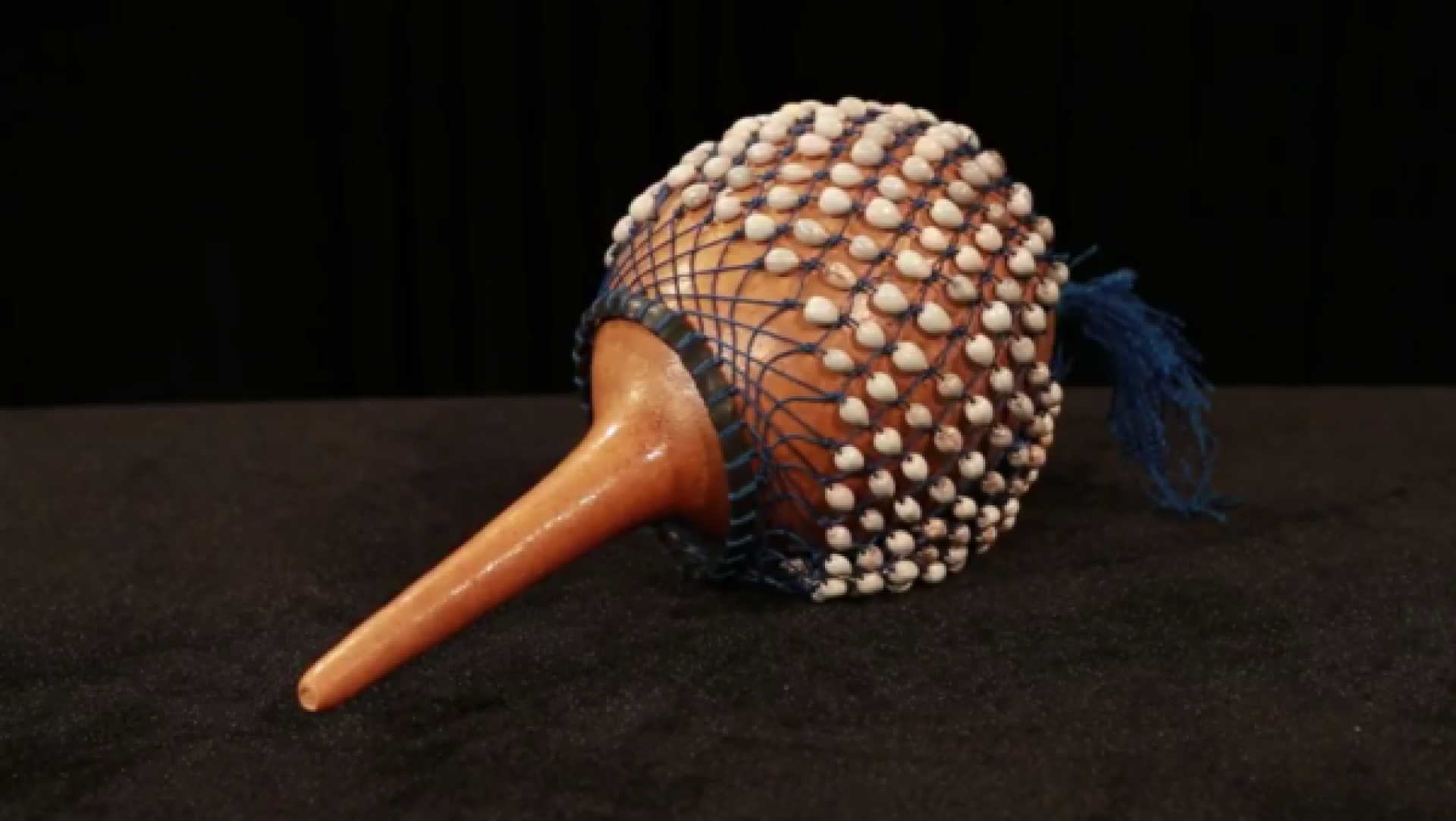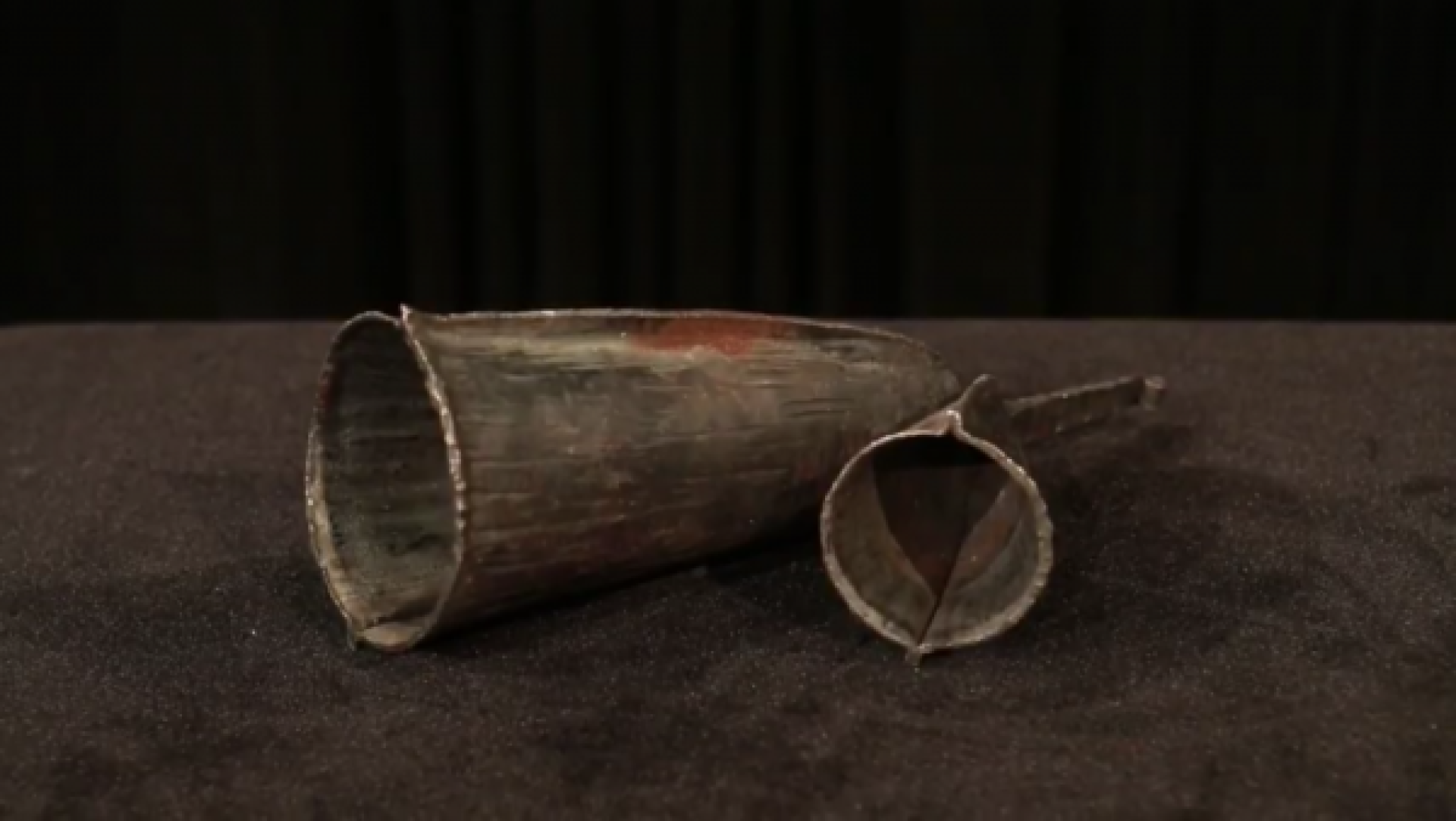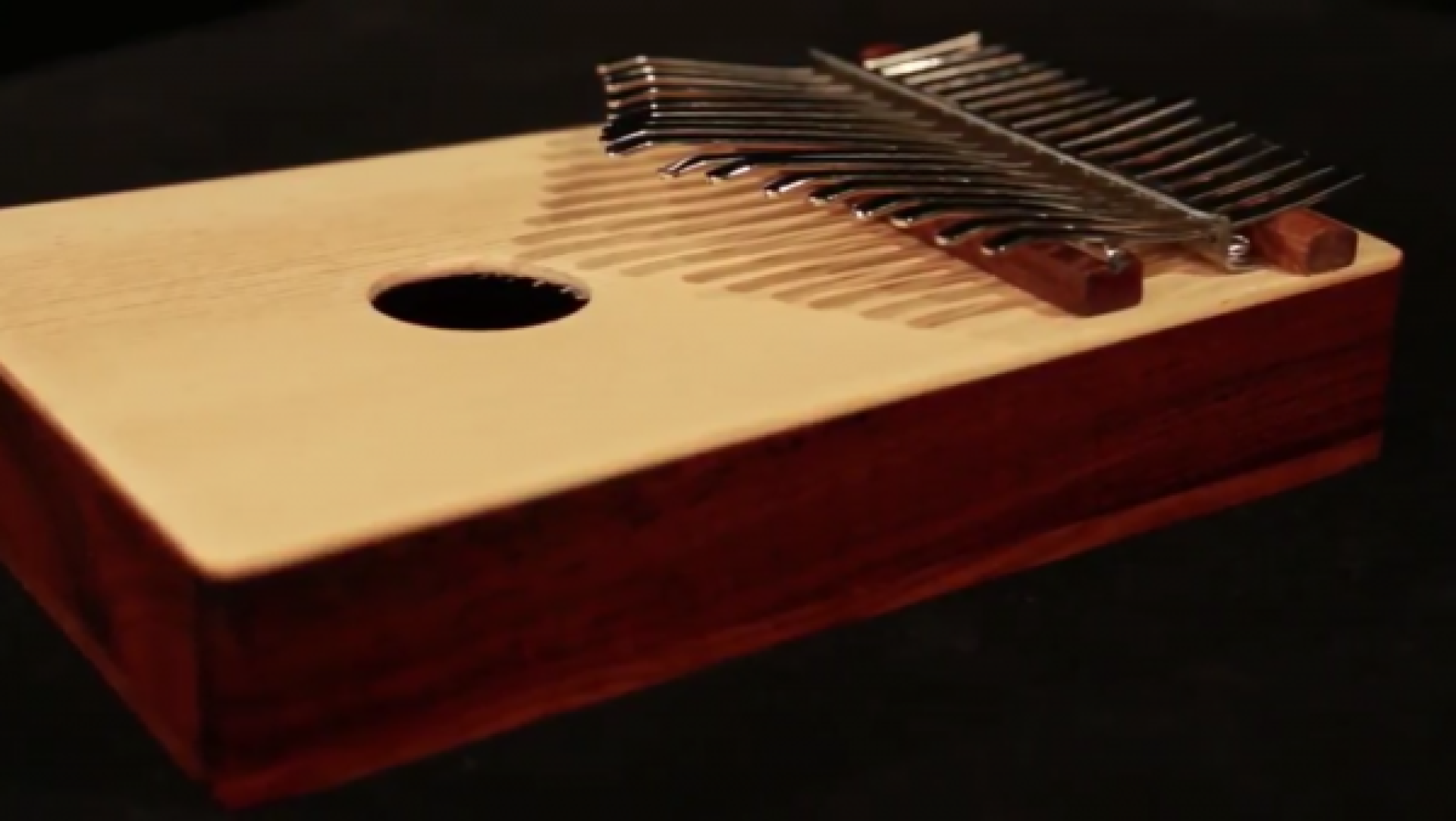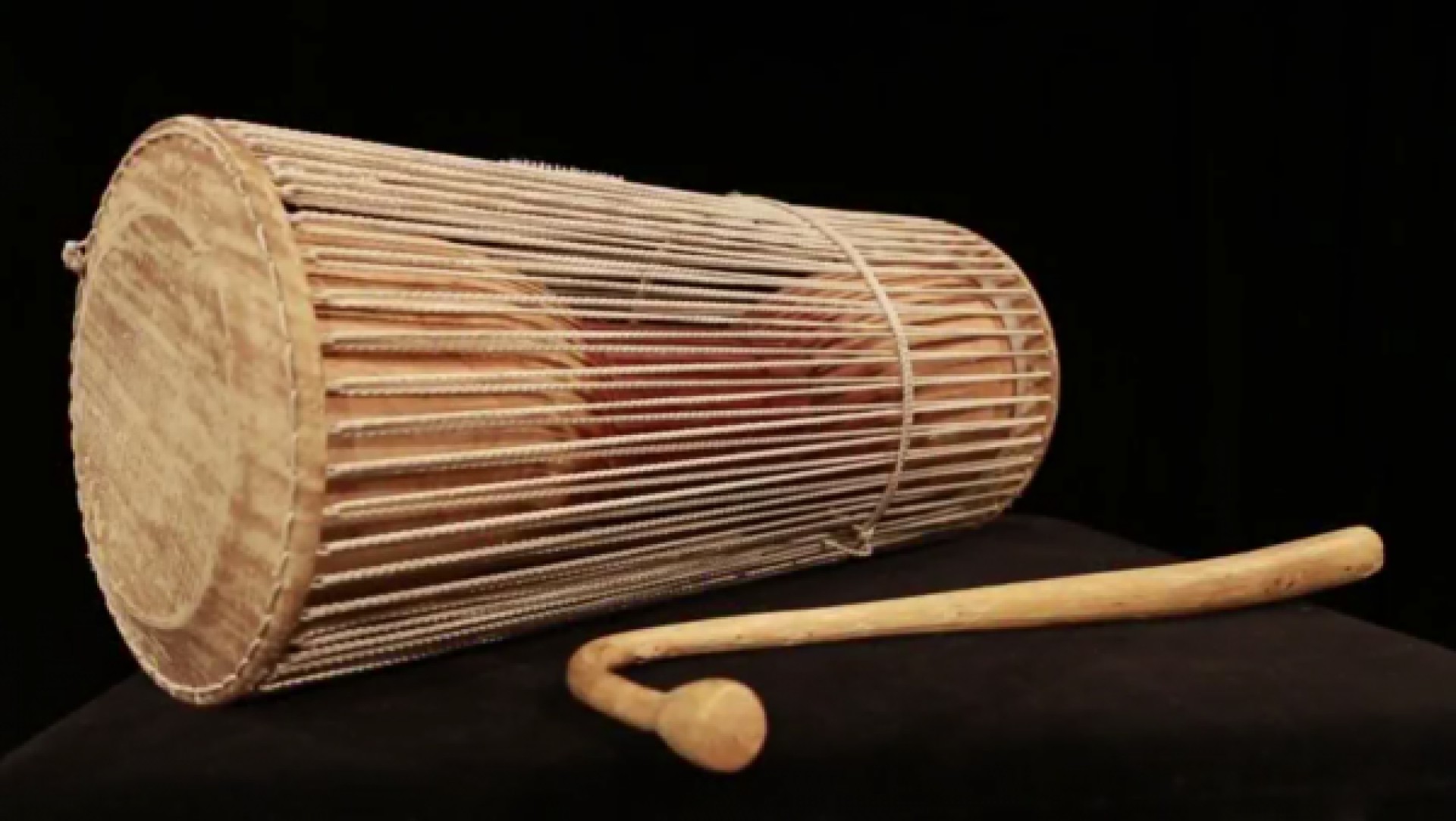Talking Drum
Part of a family of hourglass shaped pressure drums; the heads at either end of the drum's wooden body are made from hide, fish-skin or other membranes and are wrapped around a wooden hoop. Leather cords or thongs run the length of the drum's body and are wrapped around both hoops; when you squeeze these cords under your arm, the drum heads tighten, changing the instrument's pitch. One of the unique features of this instrument is the ability to closely imitate the rhythms and intonations of spoken language. In the hands of skilled performers, they can reproduce the sounds of proverbs or praise songs through a specialized "drum language" - their dialogue can be easily understood by a knowledgeable Yoruba audience. Whether accompanying dances or sending messages, the sound of these instruments can carry many miles. Specific talking drum patterns and rhythms are also closely linked with ogun, or spiritual beings associated with the traditional Yoruba belief system originally celebrated in Nigeria and parts of Ghana. This religion (and its instrumentation and rhythmic patterns) spread to South and Central America, regions of the Caribbean and the United States during the era of the slave trade. Because of the perceived potential of talking drums to "speak" in a tongue unknown to slave traders and thus to incite rebellion, these and other drums were often banned from use by the slave/plantation owners.






